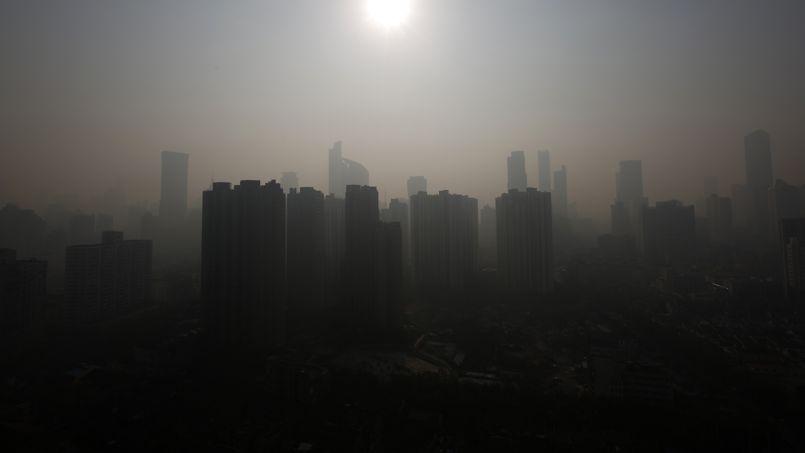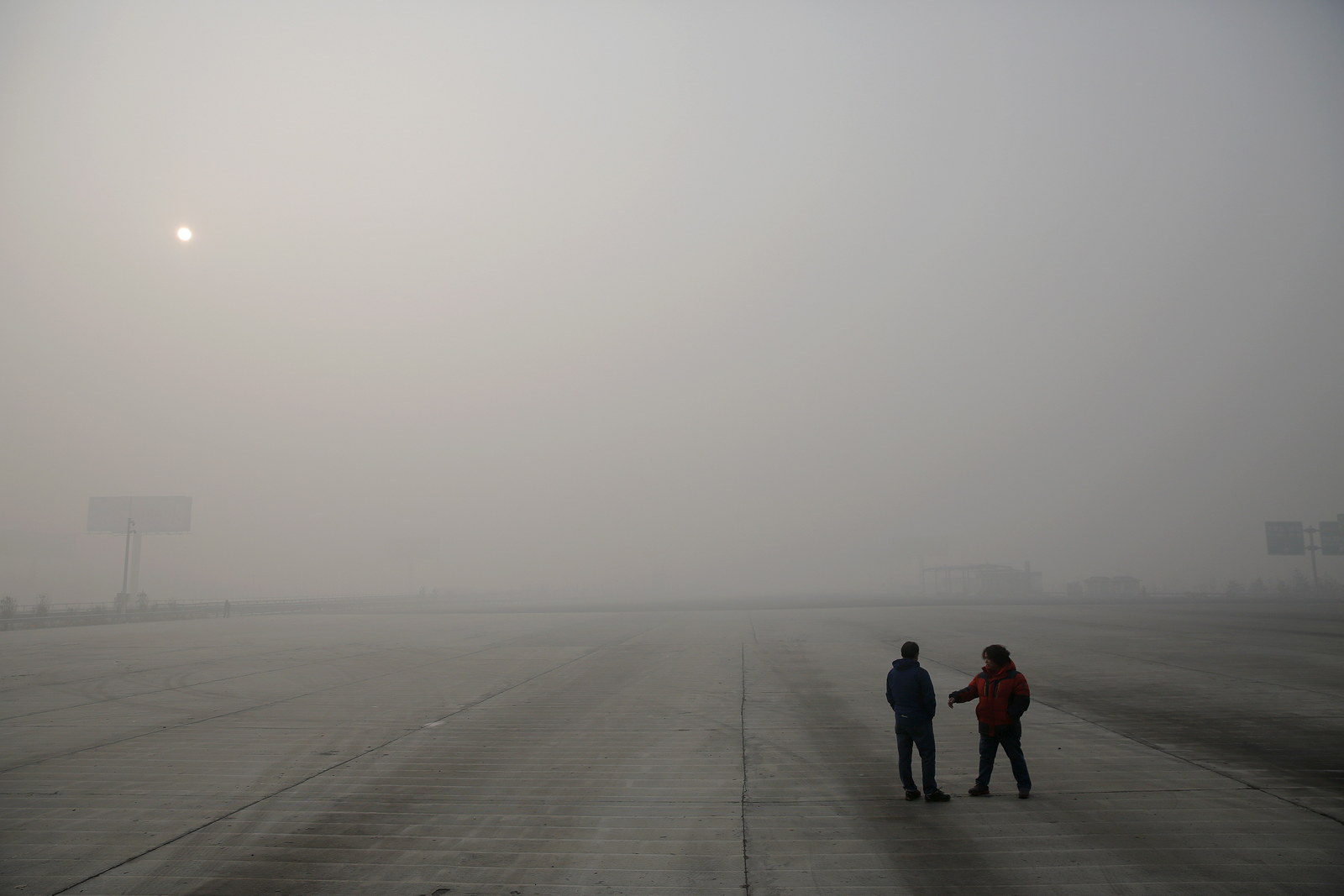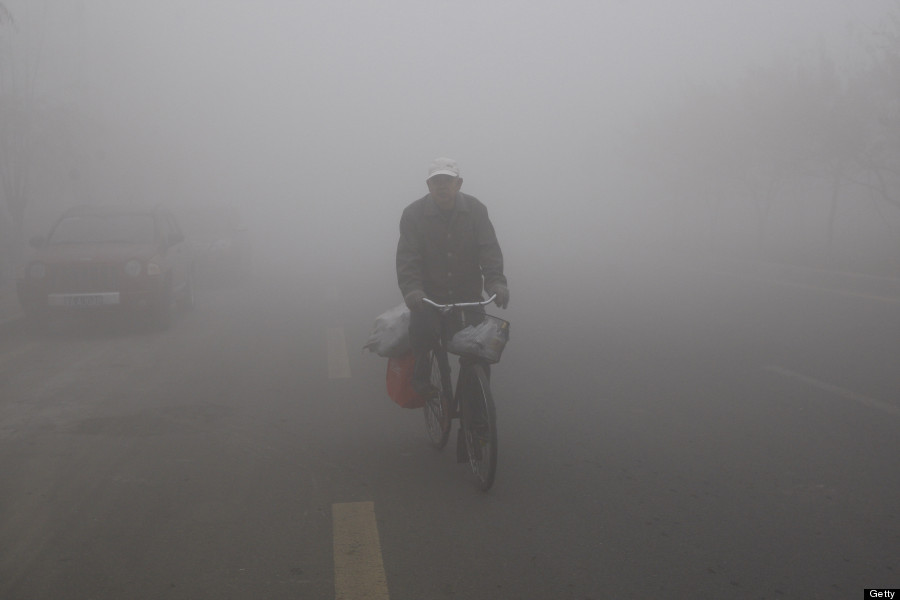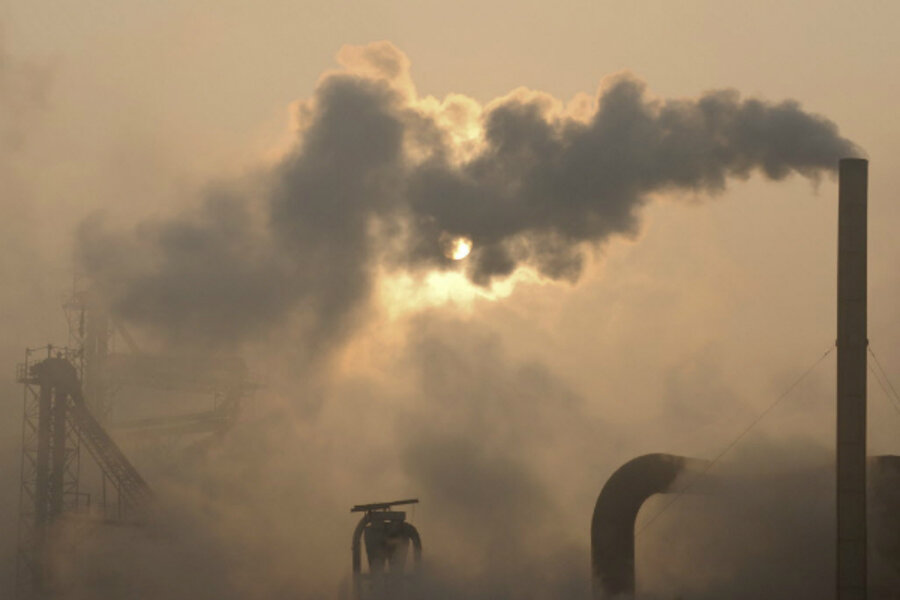By CHRIS BUCKLEY and ADAM WU
 Dancing at a park blanketed by severe smog in Fuyang, China, on Tuesday
Dancing at a park blanketed by severe smog in Fuyang, China, on TuesdayBEIJING — Like ghosts floating in a dim netherworld, the dancers twirled, spun and curtsied in smog so dense that couples a few steps away seemed to be murky apparitions suspended in a gray haze.
Filthy air has swamped much of northern China for weeks, but some amateur dancers have stuck to their outdoor ballroom routines.
The specterlike dancers in Fuyang, a city in Anhui Province, this week have become one of the images that capture China’s latest winter of smog.
The specterlike dancers in Fuyang, a city in Anhui Province, this week have become one of the images that capture China’s latest winter of smog.
A wintertime surge in pollution here is often called an “airpocalypse” in foreign news reports.
But as these images suggest, living in this miasma has become for many residents a routine to be endured, with an outdoor fox trot.
 People on scooters and bicycles navigated the thick haze in Fuyang, on Tuesday.
People on scooters and bicycles navigated the thick haze in Fuyang, on Tuesday.
 People on scooters and bicycles navigated the thick haze in Fuyang, on Tuesday.
People on scooters and bicycles navigated the thick haze in Fuyang, on Tuesday.“The scariest thing isn’t the smog, it’s how we’ve become numbed and used to it,” said one comment about the pictures on a Chinese news website, 163.com.
Others shrugged off the bleakness with sardonic humor, as people here often do.
“There’s nothing scary,” said another comment on the same website.
“There’s nothing scary,” said another comment on the same website.
“Breathing fresh smog every day, I feel fortunate to be living in this magical country.”
Air pollution is chronic across much of industrialized China, but it worsens in winter, when coal-burning heaters fire up and add to the airborne grunge from factories and power plants.
Air pollution is chronic across much of industrialized China, but it worsens in winter, when coal-burning heaters fire up and add to the airborne grunge from factories and power plants.
An uptick in heavy industry in 2016 has added to the haze this winter, some experts say.
In the cold months, polluted air can accumulate across the region, sloshing from one part to another until strong gusts blow it away — until another pool accumulates.
Smog extended from the port city of Tianjin deep into central China on Thursday.
 Tianjin on Tuesday.
Tianjin on Tuesday.
 Tianjin on Tuesday.
Tianjin on Tuesday. On Tuesday in Fuyang, the air quality there was poor, but not terrible by the hard-bitten standards of many Chinese cities.
The level of PM2.5 pollution, the fine particulates that pose the greatest danger to health, reached an average 283 micrograms per cubic meter, and the air was classified “severely polluted.”
But since December, levels across many cities in northern China have gone much higher, even reaching 1,000 micrograms of PM2.5 per cubic meter last month in Shijiazhuang, a city in Hebei Province.
But since December, levels across many cities in northern China have gone much higher, even reaching 1,000 micrograms of PM2.5 per cubic meter last month in Shijiazhuang, a city in Hebei Province.
The World Health Organization recommends daily exposure of no more than 25 micrograms of PM2.5 per cubic meter.
Many residents have become increasingly sensitive to the health threats from air pollution.
Many residents have become increasingly sensitive to the health threats from air pollution.
Patience with the smog is wearing thin, especially among middle-class residents, who can afford to travel and experience life and breathing outside the dome of haze.
The government has promised to clean up the air, and indeed there have been improvements, especially throughout the summer last year.
The government has promised to clean up the air, and indeed there have been improvements, especially throughout the summer last year.
Yet that progress has made the return of the smog this winter even more jarring.
Travelers returning by air to Beijing lately have descended from blue skies onto a Stygian underworld.
For those trying to leave, many flights have been delayed or cancelled on the worst days because of the poor visibility.
 Planes parked at the Beijing Capital International Airport on Wednesday.
Planes parked at the Beijing Capital International Airport on Wednesday.
What worries many people most is the risk to children and the elderly.
 Planes parked at the Beijing Capital International Airport on Wednesday.
Planes parked at the Beijing Capital International Airport on Wednesday.What worries many people most is the risk to children and the elderly.
This week, a letter in the name of Beijing parents urged the city government to allow schools and parents to buy fresh air equipment for classrooms.
Officials said air filters would be installed in some schools as a tryout, though not the bigger equipment the letter called for.
“We really don’t want to wait any longer!” said the letter, which circulated widely on the internet. “The smog won’t wait for us.”
Many people in Beijing and other affected Chinese cities now routinely wear masks — a novelty even a few years ago — although often they use cheap, flimsy cotton covers that do little to ward off PM2.5 particles.
 Beijing on Wednesday.
Beijing on Wednesday.
“We really don’t want to wait any longer!” said the letter, which circulated widely on the internet. “The smog won’t wait for us.”
Many people in Beijing and other affected Chinese cities now routinely wear masks — a novelty even a few years ago — although often they use cheap, flimsy cotton covers that do little to ward off PM2.5 particles.
 Beijing on Wednesday.
Beijing on Wednesday. “This winter was the first time I’ve thought about moving away,” said Lu Xin, a manager with an internet firm, breathing through a high-tech mask attached to its own electric air filter.
“My 3-year-old boy and my parents cooped up at home every day, never going out. Is that a way to live?”






Aucun commentaire:
Enregistrer un commentaire